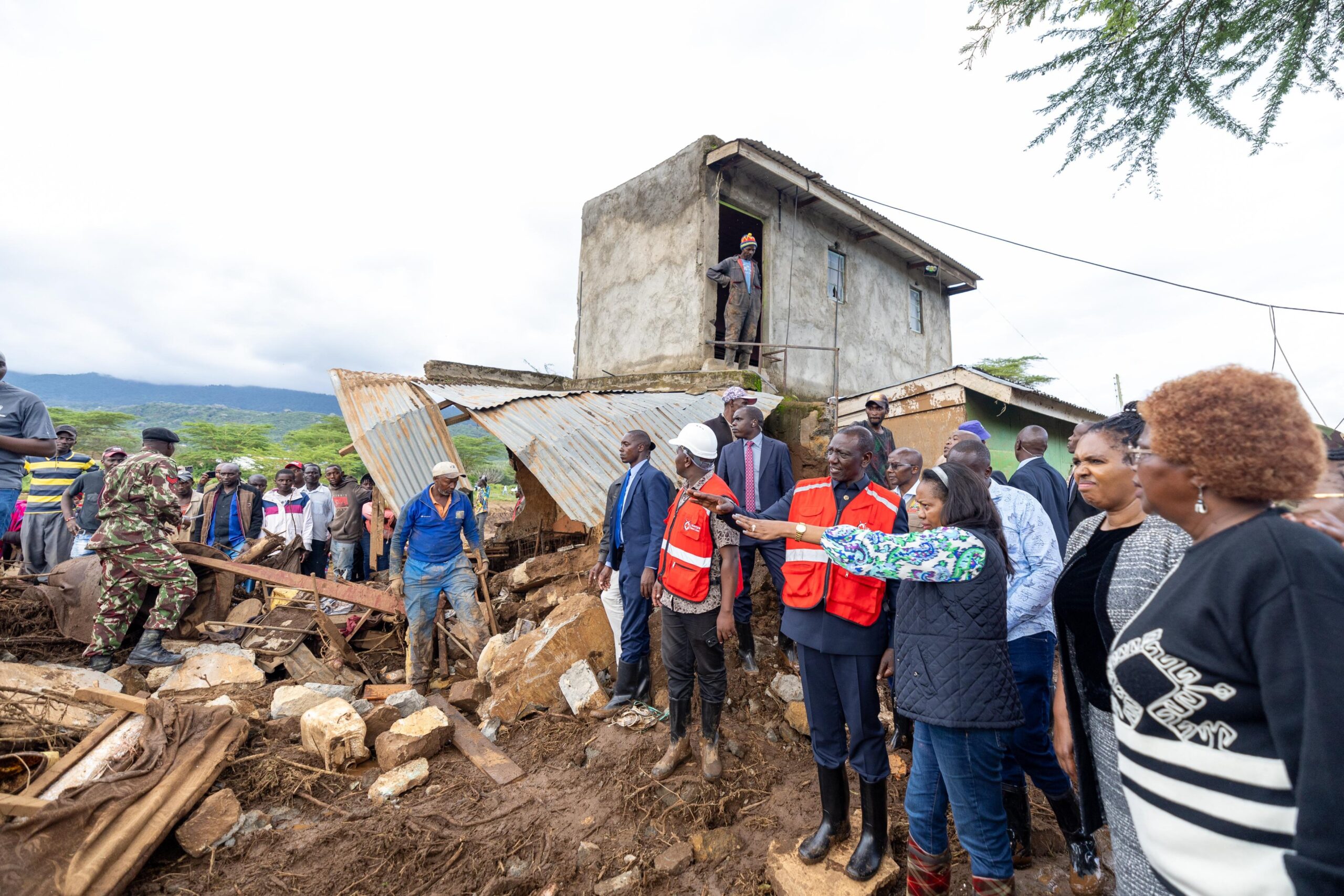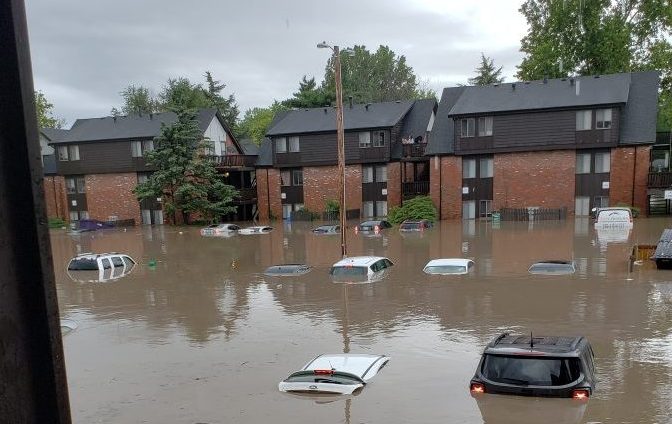What we’re watching: Weekly disaster update, May 6

We know all too well that disaster can strike anytime, anywhere in the world. Some disasters make headlines; others do not. Here at the Center for Disaster Philanthropy (CDP), we monitor the status of disasters worldwide and compile a list of the ones we’re tracking weekly, along with relevant disaster-related media coverage.
Here’s what we’re watching for the week of May 6, 2024.
New or Emerging Disasters
Flooding and Landslides – East Africa
- Kenya: Heavy rainfall is affecting approximately 80% of Kenya and resulted in at least 210 people dead and 164 injured. More than 205,000 people have been affected, and over 194,000 people have been displaced, according to the Eastern Africa flash update. In addition to flooding, a mudslide in Nakuru county claimed 52 lives on April 29, prompting ongoing search and rescue operations as of May 2.
- Rwanda: At least 130 people were killed in Rwanda after heavy rain-induced flooding and landslides on April 30. More than 5,100 homes were destroyed, and an additional 2,500 were affected. The death toll is expected to rise, according to Prime Minister Edouard Ngirente, as search efforts are underway.
- Somalia: More than 127,000 people across seven districts in Somalia have been affected by heavy rain and flooding as of May 3, leading to over 8,300 displaced people. As of April 30, seven children were killed, according to a United Nations Office for the Coordination of Humanitarian Affairs (UNOCHA) situation report.
- Tanzania: More than 155 people have died in Tanzania due to heavier-than-usual torrential rains since April. A major blackout hit most of Tanzania on May 4 due to heavy rain and strong winds from Cyclone Hidaya. Maximum winds of 120 kilometers per hour (33 miles per hour) were recorded before the cyclone lost strength and was no longer a threat as of May 5. Cyclone Hidaya was Tanzania’s first-ever cyclone and prompted mass evacuation orders.
For more, see our 2024 East Africa Flooding and Cyclone disaster profile.
Floods Issue Insight
This issue insight provides information about floods, the needs that may arise, how to help and educational resources.

Complex Humanitarian Emergency – Sudan: People in Darfur, Sudan, have taken extreme measures to survive as nearly five million people are close to famine. As the war passed its first anniversary on April 25, hunger and starvation are now also driving displacement in addition to intensifying clashes, as people leave to search for food.
As conflict and humanitarian aid blockages cause severe food shortages, some have started eating soil and leaves. The deepening food crisis has already resulted in people dying. Doctors Without Borders estimated that one child is dying every two hours in the Zamzam displaced persons camp in North Darfur due to malnutrition and disease.
For more, see our Sudan Humanitarian Crisis disaster profile.
Severe Weather – Brazil: Flooding and storms in the southern state of Rio Grande do Sul have killed at least 78 people since April 29. In addition, over 115,000 people were reported to be displaced, and 105 people were missing, stoking fears the death toll may increase significantly in the coming days. National authorities have rescued 1,000 people as of May 6.
Southern Brazil is seeing its worst floods in more than 80 years. This is the fourth and worst flooding in the last year, with some cities seeing water levels at their highest since records began 150 years ago.
Landslide – China: Guangdong has been suffering from extreme rainfall in recent weeks, resulting in floods and landslides. In the early hours of May 1, a 60-feet segment of an expressway collapsed after a landslide plunged at least 20 cars down a slope and some caught fire. At least 48 people were killed, and 30 others were severely injured.
The expressway was unusually busy as a five-day national holiday had just commenced the same day, resulting in a high number of fatalities.
Landslide – Haiti: Over a dozen people have died after heavy rains triggered deadly landslides in northern Haiti. The most significant impact was felt in Cap-Haïtien, the second-largest city, and rural agricultural communities surrounding the city.
According to Haiti’s Civil Protection office, 2,225 homes were flooded, and 15 suffered extensive damage. Heavy rain also destroyed many farms, particularly in central Haiti, and “significant losses in livestock” were reported. Heavy rain, landslides and floods come at a time when Haiti is experiencing an armed gang insurgency and political turmoil that has created a devastating humanitarian catastrophe.
To read more, see our Haiti Humanitarian Crisis disaster profile.
Storm – Texas: Parts of Houston and East Texas experienced fierce storms on May 3, causing floods, numerous evacuations and rescue operations. More than 400 people were rescued after high waters flooded neighborhoods around Houston. As of May 5, one fatality was recorded, and over 88 counties are under disaster declaration, including at-risk areas. In the last week, some areas saw almost two months’ worth of rain in just five days. Weather conditions are expected to improve in the coming days. This comes after intense storms and tornadoes hit Texas, causing river water to rise to 2017 Hurricane Harvey levels.
Previous/Ongoing Disasters
Flooding – Pakistan: Pakistan experienced its “wettest April since 1961” after receiving nearly twice as much rain as usual. At least 144 people died after heavy rain led to houses collapsing and flooding. The final report by UNOCHA covering the floods found that at least 1.5 million people were exposed to flooded areas, which resulted in extensive damage to vast agricultural lands and produce that were ready for harvest. This is expected to cause significant economic losses for local communities and farmers.
Heat wave – Bangladesh: Extreme temperatures, which forced authorities to close schools impacting 33 million children, have now dropped to below 40 degrees Celsius (104 degrees Fahrenheit). At least fifteen people were killed in severe heat-related incidents since April 22, according to officials. As schools have re-opened, the Directorate General of Health Services, with the support of the United Nations Children’s Fund (UNICEF), launched a set of guidelines on heat-related illnesses to protect vulnerable populations, including pregnant women and children.
Volcano – Indonesia: Mount Ruang saw another series of explosive volcanic eruptions on April 30, prompting the Indonesian government to permanently relocate the almost 10,000 residents of the island. The 9,800 residents were forced to evacuate after columns of ash and lava were spewed out. The volcano’s alert status was raised to the highest level, and the national disaster agency imposed a seven-kilometer (4.4 miles) exclusion zone. Authorities also warned of the risk of a tsunami if parts of the mountain were to collapse into surrounding waters.
Tornadoes – Texas: Texas saw at least 10 confirmed tornadoes ranging from EF-0 to EF-2 ratings on April 26, according to preliminary reports from the NWS. The strongest, with an estimated peak wind speed of 115 mph, started in McLennan County near West, Texas and traveled over five miles into Hill County near Penelope. No fatalities or injuries were reported.
For more, see our 2024 U.S. Tornadoes disaster profile.
U.S. Midwest Low Attention Disasters
The Midwest is regularly faced with low-attention disasters that affect people across the region. CDP’s Midwest Early Recovery Fund (ERF) effectively funds efforts that catalyze equitable disaster recovery.
These are some of the latest disasters and related news the ERF team is monitoring:
- In the town of Minden, Iowa, an EF-3 tornado destroyed nearly 50 homes, according to preliminary reports by the National Weather Service (NWS). Severe storms swept the northeast, western and central Iowa on April 26, leading to disaster proclamations for several affected counties.
- At least one fatality and three injuries were reported in Kansas on April 30 after a tornado struck Westmoreland, a town with a population of 641, on the fifth day of a vortex outbreak. The tornado affected approximately half of the town, rendering 22 homes uninhabitable and destroying five outbuildings, including garages and sheds. Severe storms causing floods and road closures were also reported in southeast Kansas.
- On April 26, dozens of tornadoes caused significant damage in Nebraska, where an industrial building in Lancaster County collapsed with 70 people inside. After evacuations, only three injuries were reported and no fatalities. Two possible EF-3 tornadoes were reported, and at least 150 homes were destroyed and damaged in Omaha alone.
- Oklahoma experienced at least 17 tornadoes April 27-28, causing flash floods and leaving over 31,000 customers without power. Governor Kevin Stitt declared a state of emergency after multiple fatalities and over 100 injuries were reported. Tornadoes also touched down on the Mvskoke Reservation and prompted the Muscogee Creek Nation Principal Chief David Hill to sign an executive order declaring a state of emergency.
In addition to the disasters listed above, we actively monitor the following disasters or humanitarian emergencies. For more information, see the relevant disaster profiles, which are updated regularly.
- Afghanistan Humanitarian Crisis
- Gaza-Israeli Humanitarian Crisis
- Horn of Africa Hunger Crisis
- 2024 Chile Wildfires
- 2024 Japan Earthquake
- 2024 North American Wildfires
- 2024 Taiwan Earthquake
- 2023 Libya Floods
- 2023 Turkey-Syria Earthquake
Complex Humanitarian Emergencies – Democratic Republic of Congo (DRC)
Many places worldwide are experiencing emergencies caused by conflict, climate change, drought, famine, economic challenges and other conditions that combine to create a complex humanitarian emergency (CHE). CDP maintains complete profiles on several CHEs, and what CDP considers Level 1 CHEs are profiled in this weekly blog post and tracked.
Escalating conflict is driving displacement, health outbreaks and hunger in the Democratic Republic of Congo (DRC). A twin bomb blast in two displacement camps in North Kivu province killed at least 12 people and prompted the United Nations to say it “may constitute a war crime.” Other humanitarian partners, like Save the Children, reported as many as 40 deaths and were forced to temporarily evacuate the camps.
This comes at a time when the DRC is struggling to contain its biggest mpox (formerly known as monkeypox) outbreak yet. Most alarmingly, scientists have detected a new form of the disease that may spread more easily among people. The World Health Organization’s 32nd situation report found more than 4,500 suspected cases and nearly 300 deaths since January 2024. DRC recently declared the outbreak a national health emergency.
In addition to decades of conflict, the last two years of violent fighting between the Congolese army and the M23 armed group have led to an all-time high of 7.2 million displaced people. The worsening humanitarian situation has led nine organizations to call upon immediate action by the international community for access to protection, a ceasefire, increased financial assistance, and food and water to stop the current acute hunger crisis.
Despite mounting needs, the 2024 Humanitarian Response Plan for DRC is significantly underfunded, with just 16% of the $2.6 billion needed to ensure sufficient aid reaches people in need.
What We’re Reading
- The Big Burnout: Life on the Front Lines of America’s Wildfires – ProPublica: Record-setting wildfires have become increasingly common over the last few years. In 2024, the Smokehouse Creek Fire became the second-largest wildfire in U.S. history. However, an investigation into the Forest Service found an attrition rate of 45% among its wildland firefighters over the last three years when the stakes could not be higher.
- New money? What the numbers say about ‘non-traditional’ aid donors – The New Humanitarian: An analysis of humanitarian data suggests that while non-traditional donors have offered significant amounts of funding, the sums haven’t grown in recent years. Non-traditional donors, such as the Gulf countries, are countries outside the mainly Global North wealthy countries. Further analysis also revealed how political interests may shape where humanitarian funding goes.
- How to get vaccines to remote areas? In Sierra Leone they’re delivered by foot, boat or motorbike – The Conversation: Studies have found that people who live far from health clinics are less likely to seek health care. However, the delivery of medicine and health care, sometimes through boats and motorcycles, as was seen in Sierra Leone, suggests an effective intervention in overcoming the abovementioned problem. This blueprint could also be used to address other obstacles to life-saving medical care.
- Where seas are rising at alarming speed – The Washington Post: Experts are seeing one of the most rapid surges in sea levels across eight states in the southern U.S. The immediate impact is already felt in Louisiana’s wetlands, which are “drowning” with failing septic systems and waterways. Scientists continue to document severe irreversible impacts, some of which may impact large swaths of coastal communities in the coming years.
Something funny: A purr-fect ending to a bizarre situation that included a cat, an Amazon return package and three miracles.
